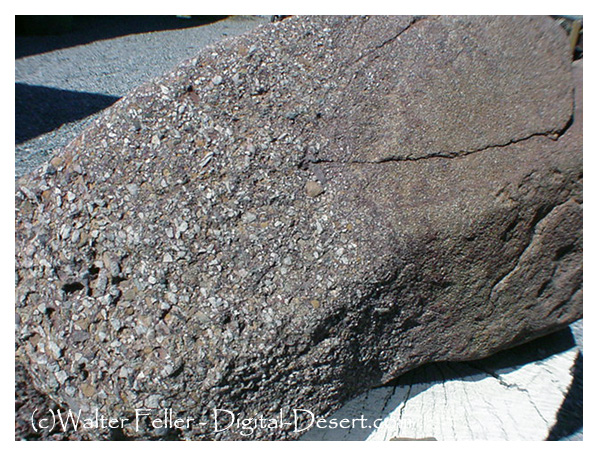|
|
Geology:
Walk Through Time
Kingston Peak Formation

< Previous - Next >
3,000 foot thick, 900+ million years old. A complex group of different types
of rocks and
sediments
of dramatically different sizes and origins.
Evidence in this
formation
suggest a wave of glaciation across
North America 600-800 million years ago.
Precambrian > Proterozoic eon > Neoproterozoic era > Tonian period
|
Kingston Peak Formation - Death Valley
The Kingston Peak Formation is a prominent geological formation located in Death Valley, California, and it extends into parts of Nevada. It is particularly noted for its significance in the Precambrian era, dating back to approximately 700 to 1,700 million years ago. This formation is part of the broader geological context that makes up the complex and ancient basement rock of the region.
Characteristics and Composition
The Kingston Peak Formation primarily consists of:
Quartzite: Metamorphosed sandstone that is very hard and resistant to erosion.
Slate and Phyllite: Finer-grained metamorphic rocks that indicate moderate levels of metamorphism.
Conglomerates and Breccias: Coarse sedimentary rocks composed of fragmented rocks cemented together, indicating high-energy depositional environments such as alluvial fans or debris flows.
Geological Significance
Indicator of Environmental Conditions: The diversity of rock types within the Kingston Peak Formation suggests varied depositional environments, ranging from deep marine to shoreline and possibly even terrestrial settings.
Evidence of Ancient Ice Ages: This formation contains dropstones and other glacial features that are evidence of one of the Earth's earliest known ice ages, the Sturtian glaciation part of the Neoproterozoic Snowball Earth events.
Tectonic Activity: The formation's current configuration and location have been significantly influenced by tectonic activity, including faulting and folding, which are part of the complex geodynamic history of the Death Valley area.
Research and Exploration
The Kingston Peak Formation is of great interest to geologists and paleoclimatologists as it provides insights into the Precambrian climate and tectonic events. Its study helps reconstruct the geological and environmental conditions of Earth nearly a billion years ago, offering a window into significant global changes including glaciation and plate tectonics.
|
